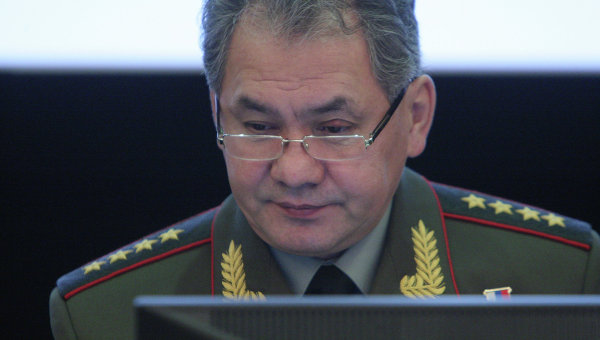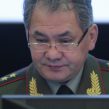
Shoigu Kicks Serdyukov Reform into Long Grass
Publication: Eurasia Daily Monitor Volume: 10 Issue: 96
By:

Six months after his appointment as Russia’s defense minister, Army-General Sergei Shoigu has initiated a number of policy reversals in key areas of his predecessor’s Armed Forces reform. Some of these changes were small measures, however in a number of his recent actions Shoigu has signaled that his real interests lie in appeasing the old guard among the officer corps rather than in nurturing a long-term reform campaign. Nonetheless, like Anatoly Serdyukov, the current head of the Russian defense ministry faces his most serious challenge with the defense industry; and it is this factor that appears to be driving the revision of the previous reform (Nezavisimaya Gazeta, May 7).
Examples of reform reversals are in plentiful supply, with Shoigu switching his emphasis to reintroducing the directorate of culture in the defense ministry as a measure presumably aimed at improving discipline in the ranks. This structural change was accompanied by an additional signal that discipline in the line units is continuing to present problems for commanders, resulting in a boost to the role and quantity of “zampolit” (political officer) posts in the table of organization and equipment (TOE). These posts were used as officer indoctrinators in the Red Army and now function as “officers responsible for raising the morale of the troops.” Their continued presence is a de facto admission that sufficiently high standard non-commissioned officers (NCOs) are absent in the Russian military. Serdyukov had slashed the zampolit numbers sevenfold without stopping to consider the possible impact of such a policy, while the defense ministry struggled to introduce well-trained professional NCOs. On March 1, 2013, the zampolit posts were elevated, no longer functioning as “assistants” but restored as deputy commanders in all units with more than 150 personnel (RBK Daily, May 10).
Shoigu has also reversed a decision by Serdyukov in 2007 to withdraw military hospitals of the branches of the Armed Forces from the main staffs and subordinate them to the chief of the defense ministry’s Main Military Medical Directorate. These military hospitals will now be re-subordinated to the jurisdiction of the branches of the Armed Forces (Interfax, May 14). Another populist move by Shoigu ahead of the Victory Day parade on Red Square on May 9 was to recreate two divisions in Western Military District (MD) based around the 5th Motorized Rifle Brigade and the 4th Tank brigade augmented by other units (Interfax, May 9, 4,).
According to the defense ministry, Shoigu will continue to recreate divisions in the Ground Forces not only in Western MD but all across Russia in a move designed to demonstrate the break with the Serdyukov years. The Serdyukov reform came to be closely associated with the transfer to a brigade-based structure for the Army, and now even this achievement is being slowly unpicked. It is unlikely that such policies will result in a return to the pre-reform TOE, but the underlying message is that the main parts of the Serdyukov reform are open to revision which leaves the final shape of the Ground Forces subject to change (RIA Novosti, May 10).
Defense ministry departments which were run by Serdyukov protégés will have their functions transferred to Rosoboronpostavka (Federal Agency for Supplies of Armaments, Military and Specialized Hardware, and Materiel). This will, in effect, transfer the inspection of new weapons and equipment for the Armed Forces from the defense ministry to Rosoboronpostavka. Konstantin Sivkov, the vice president of the Academy of Geopolitical Problems, believes that strengthening the role of Rosoboronpostavka and its transfer to the jurisdiction of civilian officials will result only in new patterns of corruption. “It is the military, not the government that is firing from the tanks and flying the aircraft. Therefore the military must duly decide how much any given piece of hardware is worth and whether or not it meets its requirements,” Sivkov suggested, adding, “The fact of a [contract] violation will first be conveyed to the government, where a commission will be established to examine the circumstances, and only then will a verdict be handed down to the enterprise. Yet, it is perfectly clear that the enterprises have their own lobby within the government. Consequently, I am certain that things will be worse than they are now” (Izvestiya, May 14).
Nonetheless, despite Shoigu’s gradual revision of numerous elements of the Serdyukov reform, the deeper problems associated with modernizing the TOE by 2020 continues to plague defense planning. The defense ministry and the Obyedinennaya Aviastroitelnaya Korporatsiya (OAK—Amalgamated Aviation-Building Corporation) failed to conclude on time, by April 15, the entire list of contracts within the framework of the State Defense Order (GOZ) for 2013. According to the 2013 GOZ, the military aviation industry must deliver 66 new aircraft and 23 modernized or repaired platforms, though 15 percent of contracts (11 billion rubles—$350 million) are still to be concluded. The un-concluded contracts relate to the delivery of An-148 aircraft (1.2 billion rubles—$38 million) and the maintenance service for Tu-160 and Tu-95MS strategic bombers (5.3 billion rubles—$170 million), Tu-22M3 long-range bombers (1.5 billion rubles—$48 million), repair and modernization of Tu-22M3 (1.5 billion rubles) and the modernization of Tu-95MS (400 million rubles—$13 million). Kommersant’s sources suggested that the delay had stemmed from the “complex transition period” following the appointment of the new defense minister, which had resulted in a review of existing contracts (Kommersant, May 14).
Such defense industry–linked issues are by no means isolated, and represent the key overriding policy issue facing Shoigu. However, the changes he is making to the shape of the Armed Forces are also important—in particular the reintroduction of some division structures in the TOE. The Serdyukov reform marked a transition to an exclusively brigade-based structure for the Ground Forces and now this has also been modified, but no senior Russian defense official has offered an explanation as to why divisions are suddenly required. The problems of staffing these new structures appears to be less prominent in Shoigu’s thinking than trying to deal with the complex task of military modernization. In any case, with the return of divisions, Shoigu has made clear that the final shape of the Armed Forces will be quite different from whatever his predecessor had envisaged.




